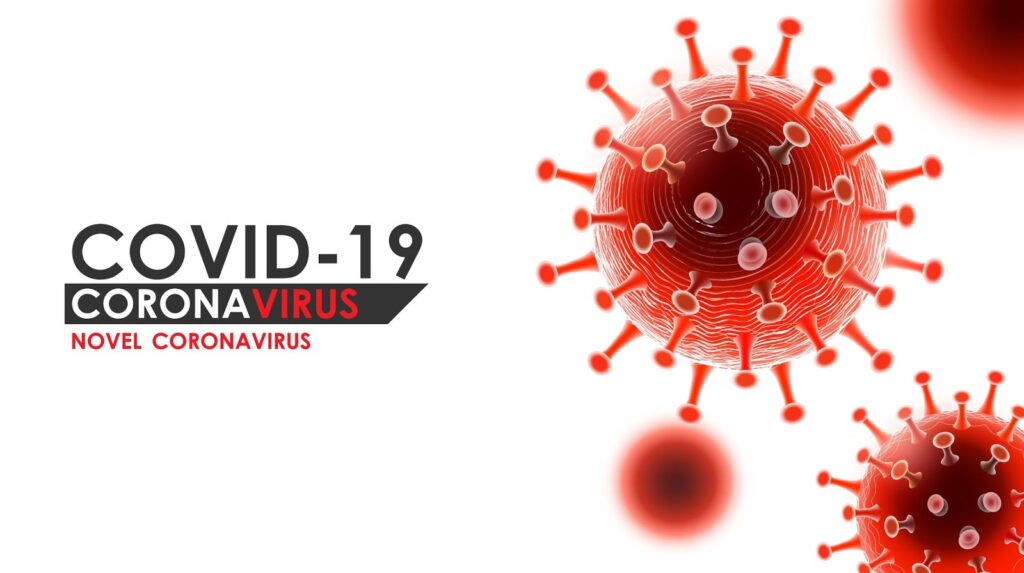after the first case was reported in December 2019.

How did COVID-19 cause infection in humans?
Coronaviruses are zoonotic. This means they first develop in animals before being transmitted to humans. For the virus to be transmitted from animals to humans, a person has to come into close contact with an animal that carries the infection.
Researchers believe that the virus may have been passed from bats to another animal — either snakes or pangolins — and then transmitted to humans. Though the definitive link to a specific animal is yet to confirmed, this transmission likely occurred in the open food market in Wuhan, China.
How did COVID – 19 spread?
- Once the virus develops in people, current evidence suggests that COVID-19 spreads between people through direct, indirect (through contaminated objects or surfaces), or close contact with infected people via mouth and nose secretions.
- These include saliva, respiratory secretions or secretion droplets. These are released from the mouth or nose when an infected person coughs, sneezes, speaks or for example sings. These droplets are relatively heavy, do not travel far and quickly sink to the ground.
- Hence, people who are in close contact, within 1 metre, with an infected person, can catch COVID-19 when those infectious droplets get into their mouth, nose or eyes.
- This happens as the viral material hangs out in these droplets and can be breathed into the respiratory tract (your windpipe and lungs), leading to an infection.
- There is a very high risk of getting infected in gatherings in enclosed spaces like office, religious place, cinema hall, gyms and theatres, as well as by using public bathrooms
- For an infection to happen, a dose of 1000 viral particles are needed. In one breath there can be approximately 20vp/min, while during speaking there can be 200vp/min. whereas during cough and sneeze there could be as many as 200million vp/min and which may remain in air if the area is poorly ventilated.
- A longer exposure carries higher risk than a brief exposure.
- One should avoid touching eyes, nose and mouth and maintain respiratory hygiene.
What are the other ways in which COVID 19 can be transmitted?
- People with the virus in their noses and throats may leave infected droplets on objects and surfaces (called fomites) when they sneeze, cough on, or touch surfaces, such as tables, doorknobs and handrails. Other people may become infected by touching these objects or surfaces, then touching their eyes, noses or mouths before cleaning their hand.
- However, this is not thought to be the main way that the virus spreads.
- WHO is assessing ongoing research on the ways that COVID-19 is spread and will continue to share updated findings.
Can COVID-19 be caught from a person who has no symptoms?
- Many people with COVID-19 experience only mild symptoms. This is particularly true in the early stages of the disease. It is possible to catch COVID-19 from someone who has just a mild cough and does not feel ill.
- It is not yet known how often it happens and ongoing research is being assessed.
What is aerosol transmission?
- Some medical procedures can produce very small droplets (called aerosolized droplet nuclei or aerosols) that are able to stay suspended in the air for longer periods of time. When such medical procedures are conducted on people infected with COVID-19 in health facilities, these aerosols can contain the COVID-19 virus.
- These aerosols may potentially be inhaled by others if they are not wearing appropriate personal protective equipment.
- There have been reported outbreaks of COVID-19 in some closed settings, such as restaurants, nightclubs, places of celebration, worship or work where people maybe shouting, talking, or singing. In these outbreaks, aerosol transmission, particularly in these indoor locations which are crowded and inadequately ventilated spaces where infected persons spend long periods of time with others, cannot be ruled out.
- More studies are needed to investigate such instances and assess their significance for transmission of COVID-19.
Conclusion
While the most common way for the spread of the COVID-19 virus amongst humans has been identified, there is still ongoing research to find more details and different ways in which the virus is transmitted.
Special thanks to Dr. Saswati Sanyal Choudhury(MD FICOG FICMCH) for expert advice.





